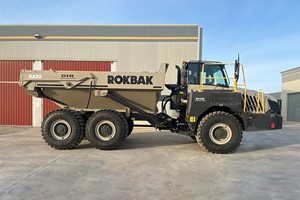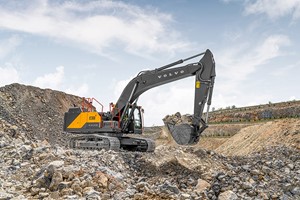Volvo Construction Equipment (CE) has unveiled two new battery-electric machines for the North American market during Volvo Days North America, held in Pennsylvania on September 17-18. The newly revealed models, the mid-sized L120 Electric wheel loader and the EC230 Electric excavator, are designed to address the growing demand for larger alternative-power construction equipment in the region.
Volvo CE emphasized that while most electric construction machinery available today is compact, the introduction of these mid-sized models marks a shift toward providing more powerful equipment with reduced environmental impact. Both the L120 and EC230 are designed to deliver enhanced performance while contributing to sustainability goals in the construction sector.
With a maximum operating weight of over 20 tons, both machines offer battery runtimes ranging from six to eight hours, depending on application. Dr. Ray Gallant, Vice President of Sustainability and Productivity Services at Volvo CE, stated, "These larger battery-electric models represent a significant advancement in our journey toward zero-emission solutions. They provide businesses and government fleets with sustainable options that align with both productivity and environmental targets."
The new models are currently available for reservation, with deliveries expected to begin in 2025.
L120 Electric Wheel Loader Overview
The L120 Electric wheel loader weighs 22 tons and offers a 6-ton lifting capacity. Originally announced for a European launch in late 2024, this model features a 600V, 282kWh lithium-ion battery system, delivering 230kW of rated power. Its battery can be fully charged in as little as two hours when using a 165kW charger, with a working runtime of between five and nine hours, depending on the task.
Volvo has equipped the L120 with three electric motors: two dedicated to propulsion and one for hydraulics. The loader also benefits from an energy recovery system that captures energy during deceleration, extending battery life and reducing wear on the brakes. Other advanced features include active and passive cooling systems for the batteries and motors, as well as capabilities for using conventional attachments such as buckets, forks, and grapples.
Notably, the L120 maintains several features from its diesel-powered counterpart, including the Volvo Load Assist system, electro-hydraulic controls, and auto bucket-levelling functions.
EC230 Electric Excavator Details
The EC230 Electric excavator, weighing 23 tons, features a 1.44 cubic yard (1.1 cubic meter) bucket capacity and is capable of producing 33,500 pounds of force. It boasts a maximum digging reach of 32 feet, 7 inches (10.06 meters) and a maximum digging depth of 22 feet, 1 inch (6.7 meters).
Powered by a 600V lithium-ion battery system with a capacity of 450kWh, the EC230 delivers continuous power of 105kW, peaking at 160kW. The battery can charge to 80% capacity in under two hours with a 250kW charger, providing an operational runtime of up to eight hours.
Volvo CE reports that early adopters of the EC230 have already seen substantial reductions in emissions and operational costs. For instance, during its use in the Los Angeles Purple (D Line) Extension Transit Project, global contractor Skanska observed a 66% reduction in carbon emissions and a 74% reduction in hourly operating costs over a 90-day period.
In another pilot program with Sunbelt Rentals, the electric excavator achieved an 80% reduction in carbon emissions and an 83% cost savings compared to its diesel equivalent, reinforcing the potential for these machines to transform the construction industry by offering a more sustainable, cost-efficient alternative to traditional equipment.
These advancements represent a critical step forward for Volvo CE in providing the market with electric construction solutions that support both productivity and environmental objectives.
By Mitchell Keller














